Why Are There So Many Quaker Organizations?
FCNL, QVS, FWCC, AFSC…there are so many Quaker nonprofits and their acronyms can leave your head swimming, so today we’re going to explore where they all came from. How have they served Quaker communities? We’ll explore the work of these groups — from serving chocolate soup to German children during World War I to a brand new organization that is supporting Quaker ministers.
And then we’ll check in about how it’s going at our own nonprofit. What have we learned in the past year? What’s been challenging? We’ll sit down with some of the people who have been instrumental in Thee Quaker’s growth.
Subscribe so you don’t miss an episode!
Leave a comment below to share your stories and thoughts!
Download the transcript and discussion questions.
Discussion Questions
- Ashley Wilcox says, “I’m a proponent of laying things down when they are no longer useful and that is not a sign of failure.” Has the threat of the word “failure” kept you from laying something down? How can you begin to think differently about it?
- Speaking of being a board member, Trayce Peterson says, “…in music, if you’re really listening, there is certainly a texture and a way in which it all works together, but there is a flexibility in that.” Think of a team or partnership you’re part of. Is there an area where you can encourage flexibility or be more flexible yourself?
Jon Watts: Something I often hear from folks who are just starting out their journey with Quakerism is: how do you remember all the acronyms?
It hasn’t always been this way. Yes, Quakers have always have a distinctive way of talking, referring to one another as thee and thou, using numbers instead of the names of the weeks and month, and trying to speak plainly and honestly whenever possible. But this modern version of Quaker-ese… littered with acronyms that start with Q’s and F’s — is a relatively new phenomenon.
So how did it get started? How is that working for us? And where do we go from here?
I’m Jon Watts and you’re listening to Thee Quaker Podcast.
If you’re a longtime listener, you’ll know that this podcast is just the beginning of a bigger vision. We have set out to build an ecosystem of online projects. In fact, our second project, the Daily Quaker Message, just launched a few months ago.
The reason we’re doing this is because we believe that media can have a very serious impact on the world, and as a religious society who identifies as “publishers of truth” we see ourselves in a unique moment; a “printing press” moment, if you will.
With the proliferation of “platforms” in 21st century internet media, we know there is tremendous opportunity and tremendous challenge in utilizing each of these platforms in its own unique way — to be a vessel for capital “T” Truth as Quakers experience it. So this podcast is just the first in many online projects.
Back in 2022, before there even was a Thee Quaker Podcast, I set out with a few other Friends to build the container that would hold this whole big vision. If you’ve been listening for a while, you may remember that at the end of Season 1, when we did something of a reflective episode. So quick little time travel to hear a snippet of that episode this is from a conversation I had with Georgia:
Georgia: Jon spent years working on a Quaker video project — many of you know it. It’s called Quaker Speak, and during that time, he started to get restless. He loved sitting with others and asking them searching, spiritual questions and then creating these videos that could ignite discussion and faith-filled responses with thousands of people. People he might never even meet in person.
Jon: And I imagined what it would look like to have a whole ecosystem of projects that are all grounded in this idea of courageous faithfulness, of internet media as ministry. What is a bigger vision for this look like?
Hannah Mayer: Oh God, I was stoked.
Georgia: That’s Hannah Mayer, our operations coordinator and also a long-time friend of Jon’s.
Hannah: I was similarly stoked about QuakerSpeak because it just felt like such a clear and present need in the Religious Society of Friends. And it was exactly the same feeling with Thee Quaker Project, like, yes. There is a need and what you’re talking about is gonna fill that need really beautifully.
You can listen to that full episode on our website Quakerpodcast.com. We’ll also put it in the show notes.
Anyway, today is a part two of sorts. We’re exploring a topic that hits relatively close to home: this 20th century phenomenon of the “Quaker nonprofit organization” and how it fits — or doesn’t — into our work for the 21st century.
Max Carter: If Quakers tipped their hats, I would tip my hat to you and the board and the organization for thinking carefully about what does a Quaker 501c3 look like now.
Jon: That is, of course, Max Carter, my former professor from Guilford College. Max has been an amazing resource for me as I’ve navigated the world of Quaker nonprofits, and he’s always been a very supportive (and honest!) guide as I have embarked on one outlandish idea after another. I called Max up to help walk me through the history a little bit… how did we get here?
Max: In the late 1800s early 1900s Christians were organizing: the missionary societies, national organizations, YMCA, things like that. And Quakers said, well, we’ll organize!
So what do you have in 1902? Friends United Meeting, Friends General Conference. 1917 you get the American Friends Service Committee. And Friends were borrowing from the surrounding culture to define their organizations, and quite often, they took on the form. They’re looking at other Christian denominations who were doing this, and it’s like the agricultural background I grew up in. You look over the fence at what your neighbors are planting when they’re planting, what they’re planting, and your Quakers are doing the same thing. And so we borrowed those structures.
Jon: So this kind of organizing was pretty new-fangled in the early 1900’s. But where did we come from? What was going on with Friends before that?
Max: Up until the early 1800s we were a peculiar people. We were a remnant. We were “separate from.” You got read out of meeting, if you attended preaching services, if you associated with those world’s people, if you married the world’s people. It was even looked upon with suspicion and disownment If Quakers and early 1800s as anti-slavery people, if they joined anti-slavery societies, because that had you mixing and mingling with the world’s people, you could be read out of my home meeting into the 1850s in Indiana if you were involved with slavery or you joined an anti-slavery society.
By the post Civil War period, as a lot of those boundary markers fell, Friends felt more comfortable with that organizational structure.
And I think for the Gurneyite branch of friends, a pivotal moment, of course, was the 1887 Richmond conference, out of which “Five Years Meeting” and eventually FUM evolved, and FGC had similar sorts of things. Various hicksite meetings led to the formation of Friends General Conference.
Jon: So those are our first two, what I’m going to call “denominational” organizations. Friends General Conference, or FGC, is the Hicksite umbrella organization that all the liberal Quaker yearly meetings belong to. Its headquarters are here in Philadelphia.
Then there’s FUM, the Friends United Meeting, which has headquarters in Richmond, Indiana. One of our board members, Dan Kasztelan, is the communications director for FUM and it just so happens he was in town last weekend.
Dan Kasztelan: Friends United Meeting kind of grew up around two ideas: Is there work that we can do together as friends across these geographic boundaries? And the other question was, how can we bring to people in other parts of the world the Quaker message?
Jon: FUM is a worldwide organization, with many yearly meetings in Kenya and elsewhere. Then there’s the EFCI, or Evangelical Friends Church International, and as far as I know the conservative Friends never formed an umbrella organization but continue to hold their Yearly Meetings as the spiritual center. The Friends World Committee for Consultation, or FWCC is intended to be a bridge between those different denominational organizations worldwide.
So that’s one segment of our Quaker acronym alphabet soup. Let’s look into a different part of the bowl: Quaker service organizations. What was going on in the world in the early 1900’s that inspired Quakers to organize around service?
Max: Here is a pattern that relates to what you’ve done, Jon, with Thee Quaker Podcast. We have an issue out in the broader culture, social media platforms. This is becoming the way to get the message out. And you’ve taken the bull by the horns and said, okay, here is a Quaker way of using social media.
What was happening in 1916-1917 that Quakers had to address? World War One and conscription.
Jon: In 1916, the US government passed the Conscription Act — the first system that allowed conscientious objectors a legal alternative to fighting.
And there were various options. You could go to jail. You begin non-combatant service. You could go to certain work projects.
And out of that, in 1917 the American Friends Service Committee was organized to provide alternative service and some, I think 99 or so conscious objectures did their alternative service through the American Friends Service Committee relief efforts in Europe so on.
So the AFSC had a relatively humble beginning, but they were soon given a much larger assignment.
Max: One of the pressing problems in 1918, 1919 was the fact there were estimated about 1,200,000 starving German children. Nobody wanted to help “the Hun.” We had, you know, posters all over America and, you know, “kill the Hun.” “Stop the Hun.”
So it was not an overly popular notion to save German children, but Herbert Hoover — Quaker upbringing in West Branch Iowa, who was tasked by the American government to oversee the rebuilding effort in Europe, said, I know who might be willing to help! The American Friends Service Committee.
So the AFSC set up soup kitchens throughout Germany and and saved 1,200,000 starving German children with the help of British friends, of course, because they offered a very special kind of soup in their soup kitchens: chocolate soup!
Jon: The American Friends Service Committee went on to win the Nobel Peace Prize in 1947. Quakers have founded or been a part of founding many other service organizations, including Quaker Voluntary Service, Amnesty International, Greenpeace, Right Sharing of World Resources and many others.
So that gives us a bit of the origin story here. There are many other kinds of Quaker organizations like retreat centers Pendle Hill and Woodbrooke, Quaker lobbying organizations like Friends Committee on National Legislation, or FCNL, Quaker schools and retirement communities, and organizations supporting those. Finally, there are a few Quaker publications like Friends Journal, Western Friend, Quaker Life, and the Friend.
And then, we’re seeing something new happening just in the last decade or so. For that I’m going to turn it over to Georgia who had a conversation with Ashley Wilcox.
Ashley Wilcox: So the other kind of thing we’re seeing right now is the newer nonprofits and that would include things like QVS, Quaker Voluntary Service, and Thee Quaker. We’re seeing some new nonprofits that I would say are more flexible, that are smaller, that aren’t these kind of older, set in their ways nonprofits. And with some of these, and I would include my own nonprofit, Public Friends in this, we’re hoping to reach a younger audience and do things differently than the 20th century institutions.
Georgia: The legacy organizations, as Ashley calls them, tend to be larger and often have a broad scope.
Ashley: A lot of people came in through these bigger nonprofits or they met the need that people saw at the time. We had a huge influx of Quakers around the civil rights movement and protesting the Vietnam War.
Georgia: Do you feel like these older organizations that were formed in the first half of the 20th century, like, are they meeting the needs still of the Quaker community today?
Ashley: I think it depends on who you ask. I think there are some people who are very attached to these organizations and believe in their missions and find a lot of value there. And there are other people who just feel like they don’t want to keep supporting these big institutions. So it varies.
Georgia: Ashley says that some of these organizations also have very few Quaker staff.
Ashley: That can be challenging for people that they feel like they’re not Quaker enough. I think some people are just tired of always getting fundraising requests from the same groups and feeling kind of stretched thin in that way. And we don’t have as many big donors as we used to have among Friends and so it tends to be more smaller donations for these things.
Georgia: Which may better meet the needs of smaller Quaker organizations that have formed in recent years and that have implemented newer fundraising platforms like Patreon, Go Fund Me, and Kickstarter. Those tend to empower everyday people to make donations in the amounts they’re able to — organizations like ours at Thee Quaker Project and Ashley’s own nonprofit, Public Friends.
Ashley: Our mission is ensuring the future of Friends in North America by supporting and developing Quaker ministers to a professional standard.
Georgia: One goal of Public Friends is to develop a recording process for Quaker ministers, who may come from meetings that have split from their Yearly Meeting and now no longer have that process in place. They are also supporting Quaker ministers through Zoom meetings where they worship together and provide mutual support. Ashley also hopes to provide matching funds for ministry projects.
Public Friends became an official registered nonprofit this summer and joined a growing number of small Quaker nonprofits. So I wondered, where does that leave the big guys?
Ashley: We have to rethink what it means to be a non-profit now. We’re seeing some organizations that are either in their settled stage or maybe reaching the end of their usefulness and that can last for a long time. I don’t see any that are closing their doors right now. Nonprofits have to be flexible and able to pivot, change, and meet the needs that people have now instead of relying on legacy projects.
Georgia: Do you feel hopeful that that will happen?
Ashley: I do. I think if we are coming to the end of some of these big organizations, that’s okay. I’m a proponent of laying things down when they are no longer useful and that is not a sign of failure. A lot of places have done good work over time and it’s a good time to reassess what is working for us in terms of structures and programs. And so I hope that Quaker organizations are able to do that.
Jon: After the break, it’s time for some self reflection. I sit down with three of our board members and we get honest with one another about the successes and drawbacks of starting a new Quaker organization in the 2020’s.
Georgia: Today’s episode is sponsored by friends Montessori School in Asheville, North Carolina. I recently spoke with co founder and art and peace education teacher Canaan Brackins to find out more about the school, which got its start in 2019 and welcomes grades one through six.
Canaan: My wife, Cara Beth and I, we’ve been teaching Montessori for over a decade now, and we knew since the very beginning that we were going to want to start our own school. Tell me a little bit about how you combine a Quaker education with a Montessori education. Like how do those two philosophies complement each other? I think at its core that Quaker education and both Montessori education have the same mission, which is to create a more peaceful and just society, and so students at a Montessori school are receiving all of the normal academics that they would in traditional schools, but they’re doing so at their own pace and making their own independent choices, very similar to how in a friend’s education, the students are also learning to listen to their own inner guide and to their spirit and to make decisions that they feel like are in alignment with that.
Our children are actively helping us co create the school. They are involved every week in a meeting for business where they make real decisions that affect what we do in our school. We really want our students to believe that this is their school, because it is their school students that have received an education at Friends Montessori are learning about who it is that they are, and they’re learning about who the person is sitting beside them, and they’re able to use those skills, hopefully, to benefit their own communities after they leave ours.
Georgia: That sounds awesome. So how can people be a part of the work that you’re doing?
Canaan: Well, the first way to do it is to enroll your child. We would love to have the opportunity to meet with you. If you’re in the Asheville area, come by for an observation visit and talk with us. We have an interest form on our website, friends montessori.org if you don’t live in the Asheville area, but are interested in the work that we are doing as a small Quaker, not for profit school. Another way to get involved is to become a donor. To learn more, contact us at school, at Friends montessori.org or you’re also welcome to email me directly at canaan@friendsmontessori.org.
Georgia: Well, that sounds great. And we’ll also have a link in our show notes.
Holly Baldwin: You’re not recording, but you’re pretending like you’re recording? No,
Dan: I think he’s checking sound levels, I think, right?
Jon: Yeah. Well, I don’t know how I’m going to tell this story yet, but it might. Part of it is we had a board retreat, and lots of people stayed at my house, so it’s kind of funny to get a little audio of like and then Dan and I were having this interview, and Holly came down.
Holly: Good morning, good morning!
Jon: So that was last weekend. After two years of all working together to build this organization, the board finally met in person for the first time for a two-day retreat. And I have to say… I’m totally hooked. It was so powerful to sit down in person everybody and just have worship together. We also had many moving conversations about the future of the world and the future of the Religious Society of Friends, and where media and storytelling fits into that future. After the retreat was over, I pulled 3 board members aside one by one for a quick debrief.
Dan: My name is Dan Kasztelan. I am a member of Fairview Friends Meeting. I am the director of communications for Friends United Meeting, which means that I am the head of Friends United Press. I’m the managing editor for Quaker Life Magazine, and I do a bunch of other stuff, too.
Our meetings before this one, have been zoom meetings, and they have tended to be an hour and a half. And what I what I really valued about this weekend was the the opportunity to have much longer conversations than we can have in those hour and a half long meetings. My understanding has grown just fantastically, just from the opportunity to, well, like, sit here on your couch and have a conversation.
Jon: So that the traditional setup, of course, in a nonprofit is, you know, staff, executive director, board, board clerk or president, um, what do you think is the the opportunity or the advantage of being organized in that way as Quakers? And what are some of the some of the challenges of that?
Dan: It’s interesting to me that in North America, about half of our staff is Quaker, and half of our staff is not Quaker.
Over and over again, I have seen the non Quakers staff just really struggle with how Quakers make decisions, why it takes so long, why you can’t just why? Why it takes months to you can’t just say, to take that to the board and to have the board discuss it and either approve it or say it needs more thought.
The upside is that when everyone does get around to the point where they can agree with the course of action that’s been proposed, then it happens.
FUM has some long standing conflicts that it has not managed to kind of resolve, in a way, for 40 years. That’s the downside, in a way, it’s also the upside, because there’s such a huge commitment that it takes, that it draws out of the member organizations to agree to continue to be in relationship with people with whom they don’t agree.
Yeah, I’m not sure that that’s going to be an issue in a board that’s constructed like, like the Thee Quaker Board, where the people who are on the board don’t necessarily represent another constituency. I’m not here representing Wilmington Yearly Meeting. I’m here with my own ideas as myself. The FUM board, where the people on the board are representatives of someone else. It makes it more difficult to do things, but then it also means that the the love and the discipline required to continue to be in relationship with each other strikes me as something pretty special.
Jon: While it was really amazing to have everyone together for the weekend, there was something bittersweet about this board retreat. Some of the board members who have been together from the beginning, and have put their blood sweat and tears into our infrastructure and personnel handbooks and governance rules, those folks are moving on to do other things. And I can’t think of a better example than Traci Hjelt Sullivan.
Traci Hjelt Sullivan: I’m Tracy Hjelt Sullivan. I’m worshiping with friends in Chapel Hill meeting, but that’s a brand new meeting to me, and my membership is still in Green Street and Philadelphia, yearly meeting. I am currently unemployed, but I am going to become the General Secretary of Right Sharing of World Resources, which I’m just over the moon excited about.
Jon: I’m pretty excited about that too.
So Traci has been an essential resource for me as we’ve been building this organization. Whenever I have a question or a dilemma as a supervisor or with thinking about the finances of the organization, I call up Traci. Not to mention, she also heroically did our first two 990’s. So I wanted to start the conversation there. I know it’s not the sexiest topic in the world, but as Quakers with lots of nonprofits doing work on our behalf. What is a 990? Traci says that many people think of it as a nonprofit tax return.
Traci: But it’s really a transparency vehicle. So there are things people don’t know. You can look up the salary of almost every executive director by looking at the 990 and certainly you can if they’re being paid more than $100,000 a year. That salary just has to be there. And you can see the full Board of Directors and every organization after it gets to be a certain volume has to tell you whether it was involved in the tanning industry. Were you running, were you running a sun tanning clinic? Is one of the questions It just makes me laugh every single time.
Jon: For the record, to our audience, we are not involved in the sun tanning industry as far as I know.
So, I asked you to be part of the first generation of the board of Thee Quaker Project. That must have been in 2022 before, before there was an organization yet. And you said, yes, why did you say yes?
Traci: It wasn’t before there was an organization. You already had the incorporation, and you had had a very small board to just get things started.
Jon: Before there was any program, any anything to show for this idea. It was just a it was, it was a baby.
Traci: Before the executive director had any salary is what I remember. Why did I say yes? Well, Jon, you’ve been talking to me about this vision for a long time, and I have just seen the patience and persistence with which you continue to ask for other people’s expertise. Was like, I have this vision, and I have a lot to learn, and so you just, you know, you just kept asking for help. Maybe you knew you were also cultivating future donors. It was, I think, very smart way to do it.
But I had just seen that, and this wasn’t a flash in the plan idea. You had invested years of thought and refining the idea. And I really wanted to support you in in doing that. I also love podcasts. So the idea of having podcasts that were reflecting some of my faith community was really exciting, and I really liked the people that were drawn to serve on the board. So I thought, Oh, here’s a community of people I get to work with.
Jon: I asked Traci what’s in store for the next generation of the board.
Traci: Today someone said yeah, we there’s we’re in good shape. There’s nothing like broken that the new board members need to fix. And I was like, Oh no, it won’t be long before they’re discovered we did all sorts of things like, what? Why was it set up that way?
Jon: Someone at the board retreat, said, You know, I served on a board a while ago, and the executive director still calls me every once in a while, and I thought of you, I hope you don’t mind if I keep calling you.
Traci: I would be very pleased if you kept calling me really, really pleased. Being an executive director can be really lonely, and I think it’s really important to reach out for support and help and not not to feel stuck like it’s all on your shoulders, and I have seen you just it’s been inspirational to me to see you being willing to just learn, learn, learn, learn, without without, you don’t seem to carry that voice at office that many of us do. Of like, how come I don’t know this already? It’s just like, I don’t know what? So I’m going to reach out to people who might know it. I’m going to figure it out. So keep it up. Keep calling me.
Jon: Thank you, Traci.
Finally, to take us home here, we have Trayce Peterson who I spoke with after Meeting on Sunday morning.
Trayce Peterson: Tracy Peterson, I live in Tucson, Arizona, and I am a lurker at Pima Friends Meeting. Yeah, that’s. I do a little teaching at the University of Arizona and their human rights practice program. I do some consulting with not for profit organizations and around Tucson, and I also am involved in an experimental project related to wealth redistribution.
Jon: Trayce Peterson has also been with us since the early days and has helped build the Governance Committee. I asked Trayce why she joined the board in the first place.
Trayce: I like startups. I you know, there’s something so exciting because it’s expansive. We are sort of free to know it’s going to be messy. And you know, when you really have confidence in the person who has the vision it’s just really exciting to go on the on the ride, right, and to, you know, offer the piece that I can.
I think, in terms of this second generation, it’s pretty amazing is that there are just so many talented, gifted and caring people in the Religious Society of Friends who understand that the way in which we might share that the message of Quakerism has to shift. And it’s not the only vehicle, but it’s one vehicle that I think meets where we are in the 21st century with technology.
Jon: So we’re we’re moving into a new phase here of the of the project. We have two of our programs up and running, of course, the podcast and the daily Quaker message. We’re about to launch a third one Quaker videos and and we’re and the the board is moving from the sort of frantic startup phase like gotta, gotta build the plane while it’s flying to how can we, how can we reinforce this foundation? How can we, you know, soar? What, what advice or wisdom do you have for me or for the board about this next, this next phase? Yeah.
Trayce: I think we’re always going to have to be fine, fine tuning what invitation looks like, both in terms of, you know, the work that you as ED, the ED does with staff, and those of us who are in the board as we think about possible board people to serve, I think the other thing that is before us is our capacity to be nimble and pivot when it’s necessary, because our world is changing so in some ways, drastically and not in a direction that many people think is a positive one, at least in this country.
Sort of like in music, if you’re really listening, there is certainly a texture and a way in which it all works together, but there is a flexibility in that.
Jon: Thank you.
And with those final thoughts, I’m going to sign off, knowing there will be a third chapter, so to be continued.
If you’ve listened this far and you’re interested in some of the questions we are wrestling with about how to run a faithful Quaker nonprofit in the 21st century, I’d like to ask that you consider getting in touch. We are looking for board members to help us continue to “build the plane as we fly it” and join us in asking the tough questions about what the future holds for Quakerism and for the world. Visit Quakerpodcast.com/contact to get in touch. Thank you for listening.
Georgia: Thanks for listening and thank you to our guests for sharing your knowledge about nonprofits and your experience with Thee Quaker. For discussion questions and a transcript of this episode, visit QuakerPodcast.com.
This episode was produced by Jon Watts with reporting and editing support from me, Georgia Sparling. Jon wrote and performed the music.
Studio D mixed the episode. Your moment of Quaker Zen will be read by Grace Gonglewski.
If you like what you hear, please consider becoming a Podcast supporter — you can do that on a monthly or a yearly basis. Head to QuakerPodcast.com and click on Support to learn more.
And now for your moment of Quaker Zen.
Grace Gonglewski: Tayeko Yamanouchi, 1980: My heart overflows with a desire to give [God] something in return. I have nothing to give but my own being, and I offer him my thoughts, words and actions of each day, and whisper ‘Please take me as I am.
Georgia: Sign up for daily or weekly Quaker wisdom to accompany you on your spiritual path, just go to DailyQuaker.com. That’s DailyQuaker.com.
Reported and produced by Jon Watts with additional reporting and editing by Georgia Sparling.
Original music and sound design by Jon Watts (Listen to more of Jon’s music here.)
Mixed and mastered by Studio D.
Advertising by Friends Montessori School in Asheville, North Carolina. Learn more at www.friends-montessori.org or email canaan@friends-montessori.org.
Supported by listeners like you (thank you!!)
Referenced in this episode:
- How to Start a Quaker Nonprofit
- Ashley Wilcox’s new nonprofit Public Friends
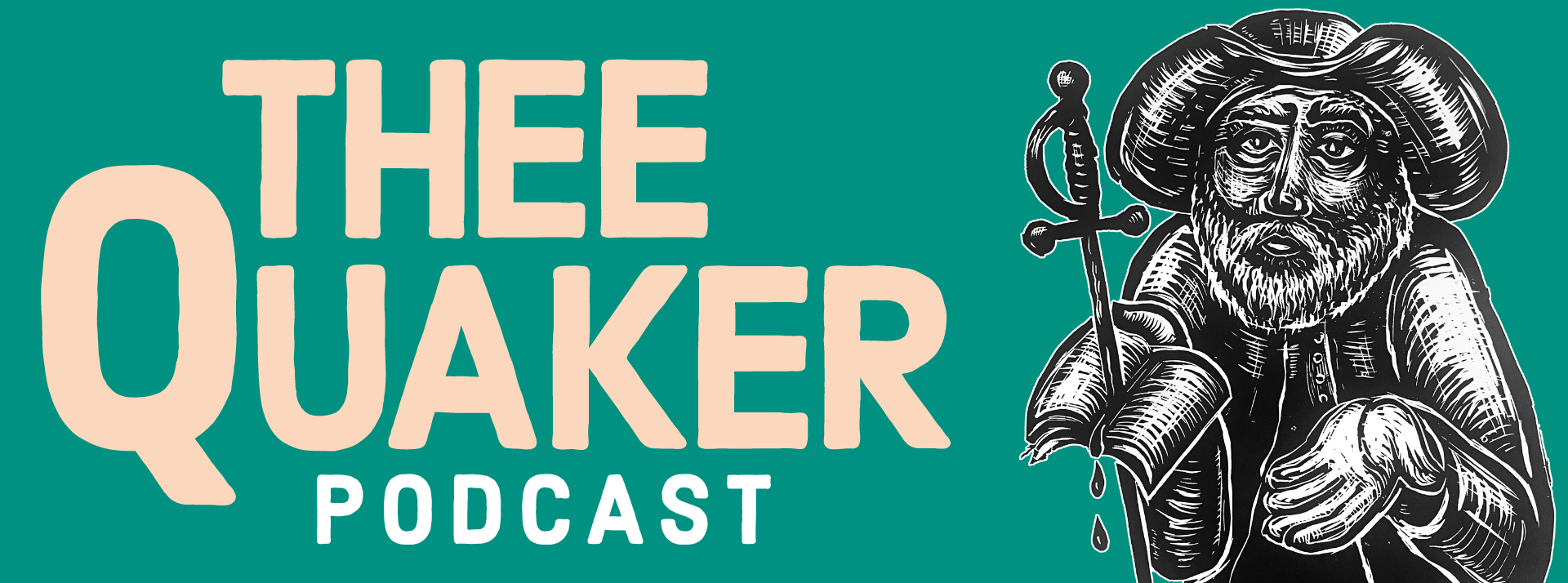
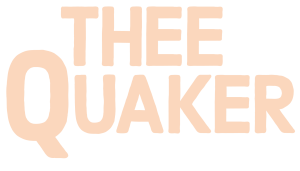
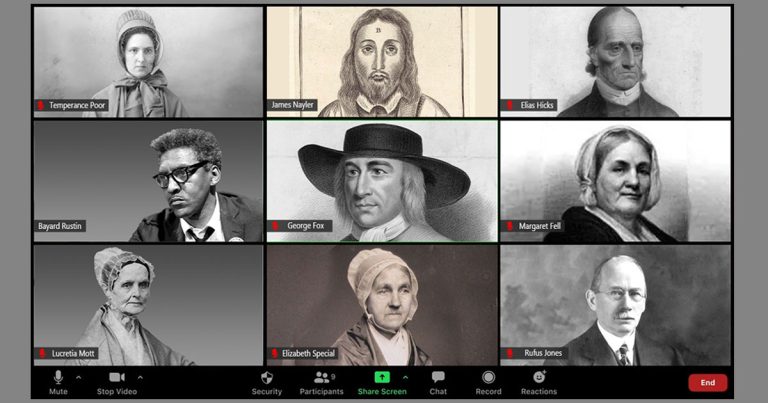
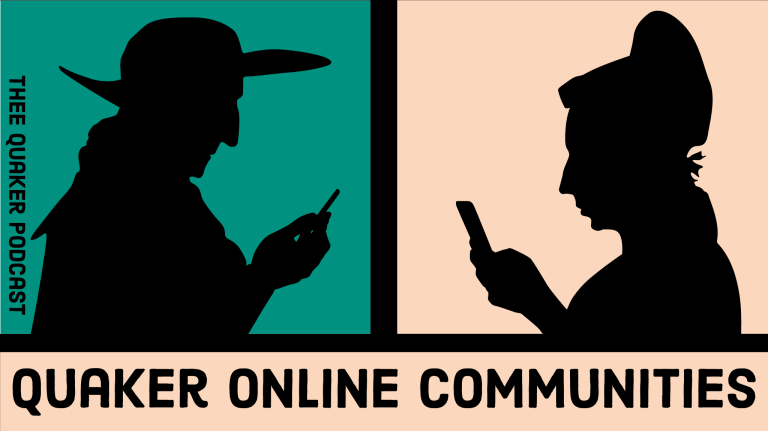
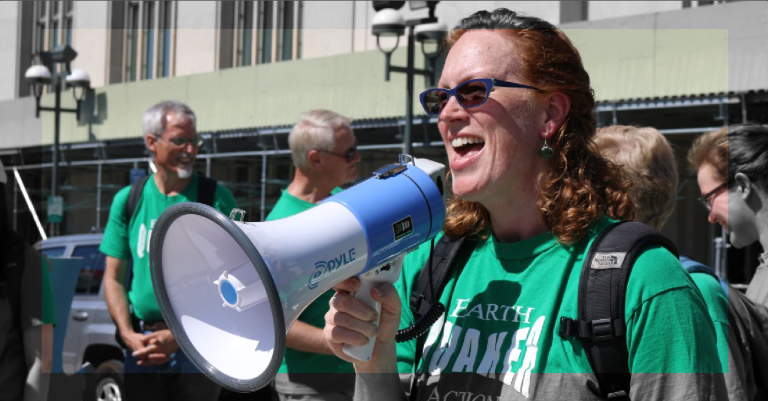
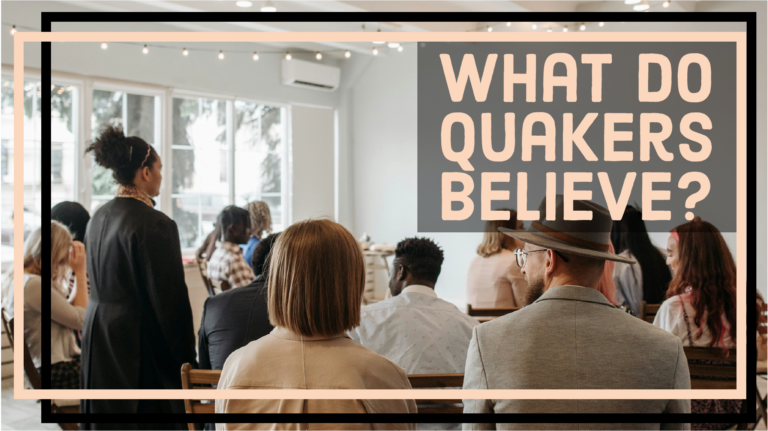
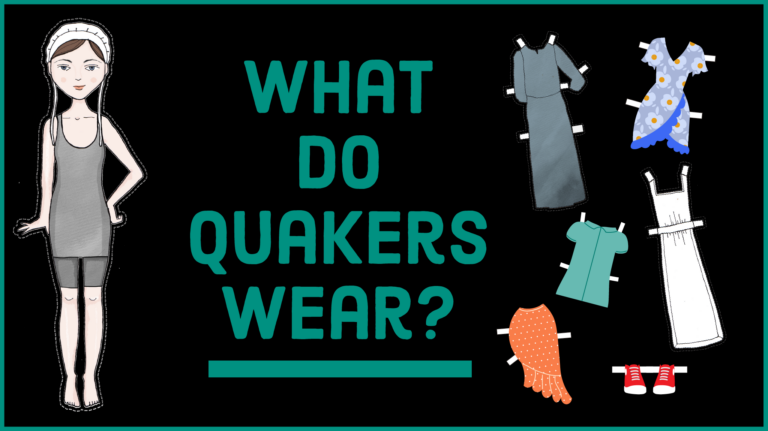

The AFSC won the Nobel in 1948 along with the Friends Service Council of London (as was) Yearly Meeting. You mention Woodbrooke and The Friend, but little else outside the USA. Like the internet and social media, the Society of Friends is a global phenomenon, not only an American one. It’s interesting to hear about the proliferation of Quaker non-profits in the US, but what’s happening in the rest of the world?